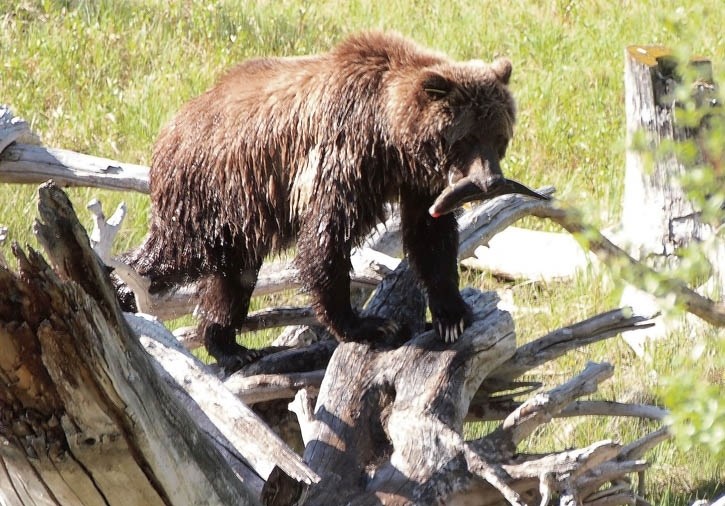BANFF – Living near wildlife, rather than living with wildlife is the mantra of a new communications plan.
Town council has set aside $67,000 in Banff’s 2019 operating budget for a multi-year human-wildlife co-existence communications plan, which will include a series of social marketing campaigns intended to shift thinking about wildlife in the townsite.
Officials say the campaign will primarily target Banff residents to establish a new community norm about keeping wildlife out of the townsite in order to avoid conflict, and, ultimately, to protect the lives of humans and wildlife such as bears, elk, cougars, and wolves.
“This program intends to help Banff avoid the death of ‘another’ Bear 148, or wolf pack,” said Jason Darrah, director of communications and marketing for the Town of Banff.
“We will be focused on residents first, so we can start ‘walking the talk.’ ”
The Bow Valley human-wildlife coexistence task force last year released 28 recommendations to reduce the number and severity of encounters between people and residents.
It was the management of a particular female grizzly bear known as No. 148 and her movements over the summer of 2017 that highlighted the challenges that wildlife face in a busy and developed valley managed by different agencies.
Bear 148 was eventually shot and killed in B.C. after being shipped out of Canmore, where she had been having daily encounters with people, including the last one when she came within three feet of a male jogger on the power line trail near the Peaks of Grassi neighbourhood.
In recent years, cougars, wolves and bears occasionally have made their way into the Banff townsite.
A sick cougar hid under a deck in Middle Springs, a coyote denned with her pups under a porch on Glen Avenue and wolves got into garbage. Before here death, 148 would come into town to feast on fruit trees.
Councillor Corrie DiManno said it’s important council puts money where its mouth is when it comes to wildlife issues.
“Humans are the biggest threat to wildlife living here,” she said. “It’s really important we shift some of that behaviour we see.”
Council has agreed to $67,000 for a human-wildlife coexistence communications program for this year, with another $35,000 slated for 2020 and $45,000 in 2021.
The Town will hire a consultant to help come up with an umbrella communications plan. Banff is hoping the Town of Canmore and Parks Canada also will kick in some dollars to partner on the plan.
Priority topics in the campaigns include: education to control what’s dumped into construction bins that could attract wildlife; dogs off leash; proper garbage and recycling disposal; fruit trees; and hiding cover for animals such as decks.
There will also be seasonal campaigns to eliminate wildlife attractants or hazards, like Halloween pumpkins and Christmas lights.
Mayor Karen Sorensen said it’s important the municipality adds some weight to the recommendations of the human-wildlife coexistence committee.
“I think education is one of the best things we can do,” said Sorensen, who was co-chair of the task force. “I firmly believe the money before us will be reduced because of partnerships.”




